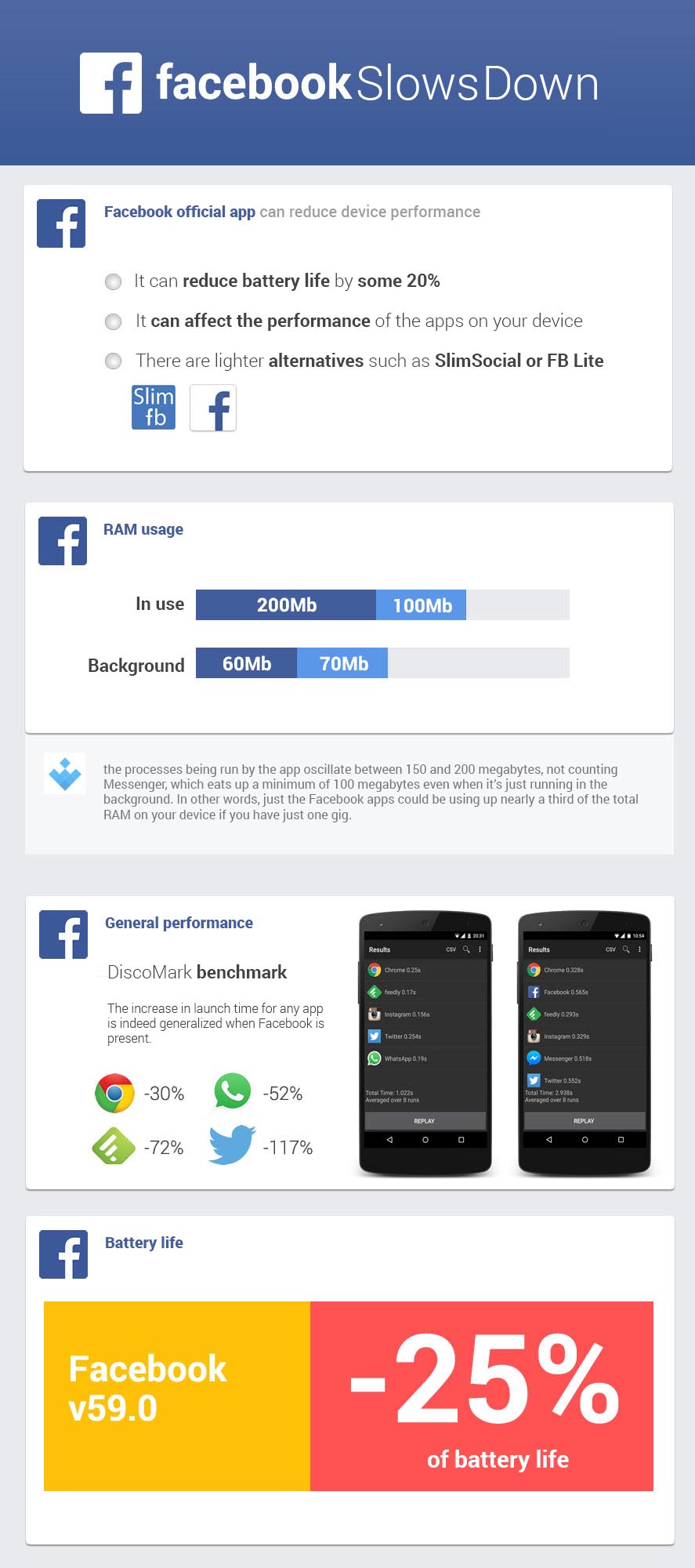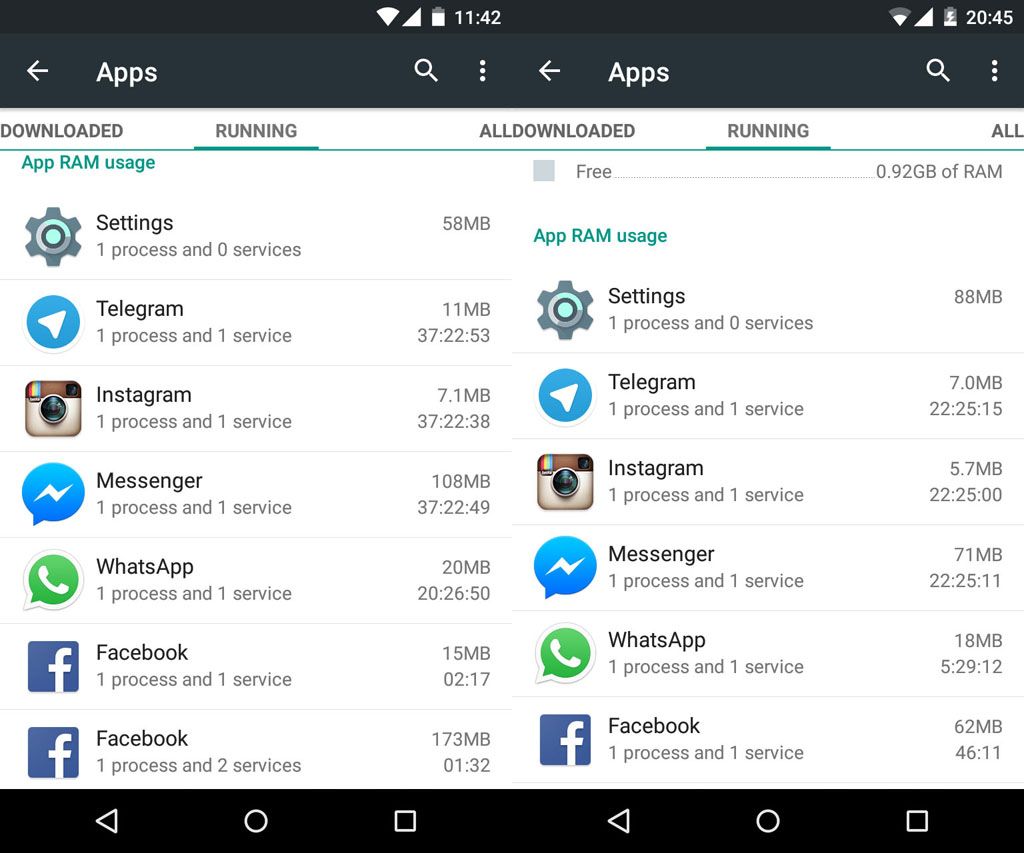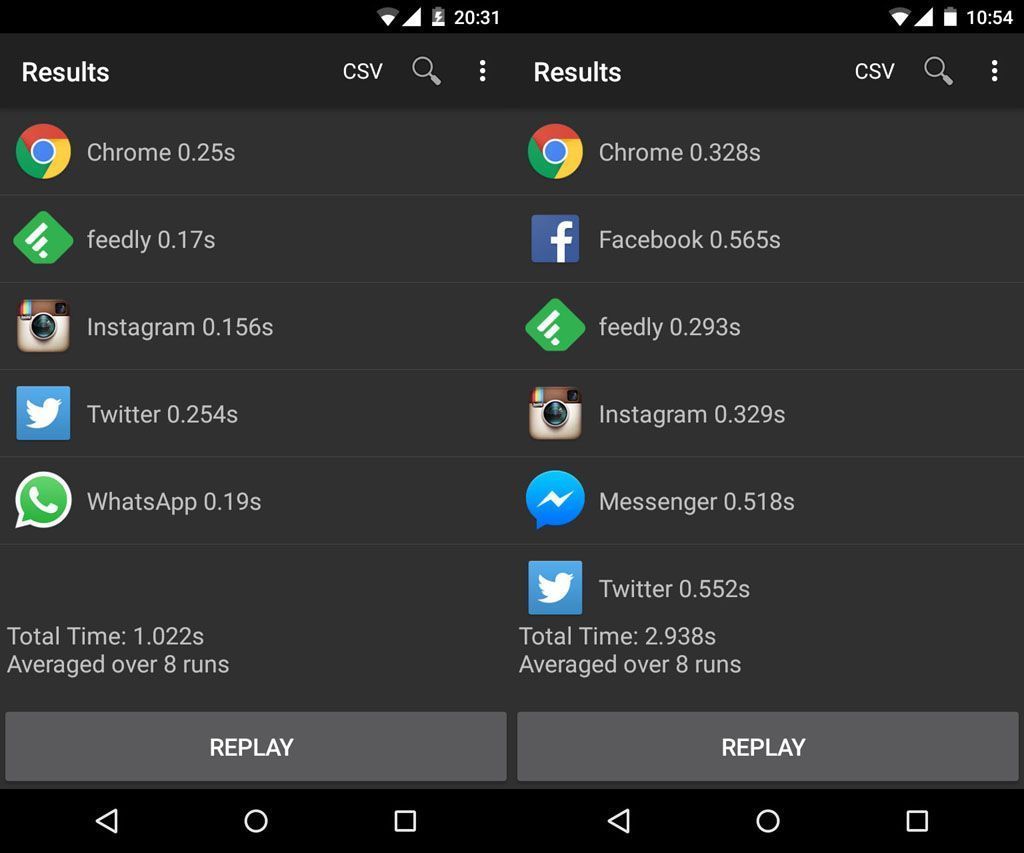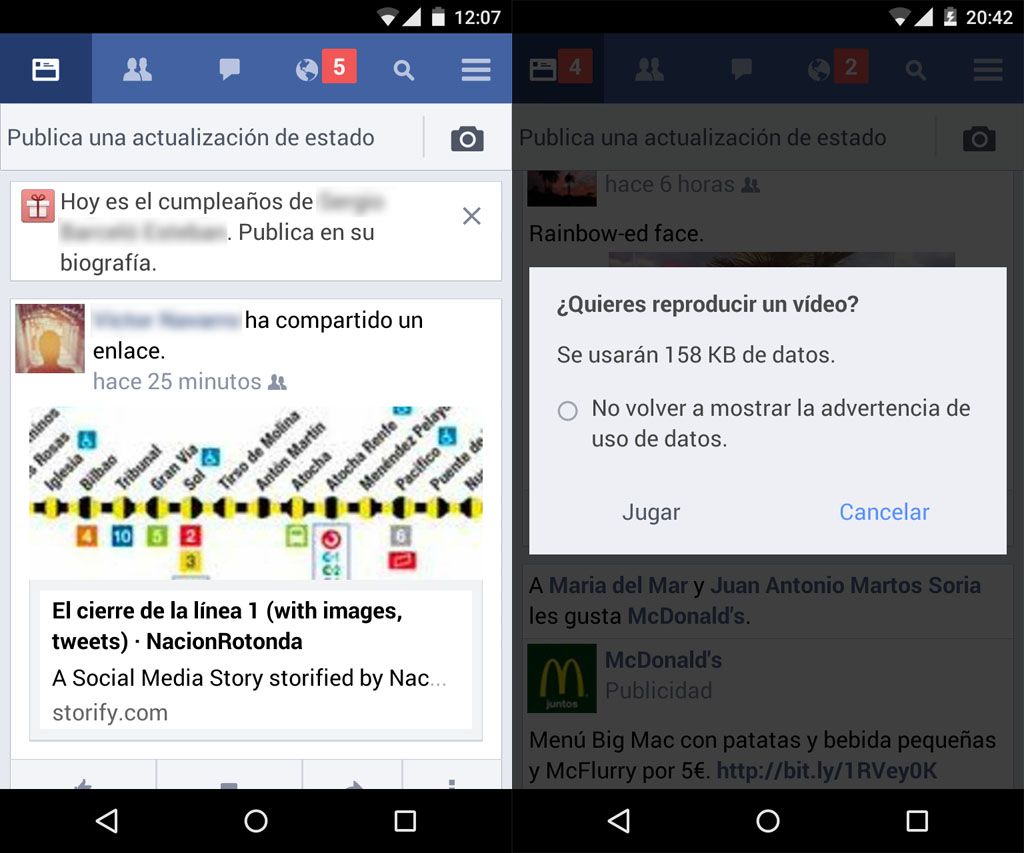The performance problems with Facebook’s official mobile and chat clients are well known, as they eat up the battery on your device even if you don’t touch them for most of the day. Recently, these problems have made it back into the mainstream media after tests done by a reddit user found that the Facebook and Facebook Messenger apps for Android can reduce battery life by some 20%, among other negative effects.
As the best way to validate information is by doing field tests, we’ve analyzed the app’s performance on a medium-range device, which is where we’re really interested in seeing the negative impact when hardware resources are limited. We used version 59.0, released a bit more than a week ago, and although some later changes have appeared, they don’t appear to be too significant. At the hardware level we’ve done our tests with a Nexus 4, focusing on three basic aspects: RAM usage, general device performance, and battery life.

RAM usage
The old saying goes that RAM unused is RAM misused, given that its correct use by applications can enormously improve general performance. The real problem is in the mid/low range, where you need to be very careful in administering your sole available gigabyte of RAM. You won’t need any external tool for taking this measurement, as from Settings > Applications > Apps in execution you can do the checks you need.
We’re going to distinguish between two different scenarios: in one of them you’ll open the official Facebook client and browse through it for a few minutes viewing a couple videos and checking out a few of our friends’ profiles. In this case we see that the processes being run by the app oscillate between 150 and 200 megabytes, not counting Messenger, which eats up a minimum of 100 megabytes even when it’s just running in the background. In other words, just the Facebook apps could be using up nearly a third of the total RAM on your device if you have just one gig.

Now we’re going to take the same measurement but closing both apps, which doesn’t at all mean that they’re not taking up space, since as we’ll see shortly, it’s the silent processes running constant checks, even when they’re closed, that hurt your device’s performance the most. Even with both apps closed, Facebook occupies 62 megabytes, and Messenger 71 megabytes.
General device performance
Another of the shortfalls of the official client has always been how slow it is in browsing and opening up, but what many people have realized over time is that it can even affect the performance of the rest of the apps on your device. In this case we’ve used a free Android app called DiscoMark that lets you simulate multiple app launches and measure the total time it takes a set of programs to open in successive cycles.
To do this check we’ve selected three representative apps that many people use, including Google Chrome, Feedly, Twitter, and WhatsApp, and we’ve run eight joint simulation cycles both with and without the Facebook client. In other words, we’ve simulated a common practice that consists of opening a series of apps throughout the day and seeing how using the client affects the operating conditions. That said, obviously this simulation is carried out in an environment that’s rather different from the real one, meaning the results should be evaluated accordingly. The attached screenshots show the results: the increase in launch time for any app is indeed generalized when Facebook is present, and launch time increases considerably with each new iteration.

Battery life
We don’t even really need to do a check to know that Facebook is a voracious consumer of battery. What we want to know, though, is why. The smartphone client, even when closed, is permanently ‘on the lookout’ in the background checking whether it should send some sort of notification for a message or other user interaction. Birthday reminders, notifications of “special” days, event invitations, mentions … it’s quite possible that these are the culprits.
‘Wake locks’ are calls that the app makes to the device to activate it into some sort of action even when the screen is off. This provokes an additional energy expenditure that can end up dramatically reducing battery life even when you’ve hardly used the device, although it’s the hardware itself that will ultimately determine the final performance. A clear example is the energy efficiency of the transmitter for mobile connections; those days when you’re not connected to WiFi networks might be particularly awful.
With version 59 of the official Facebook client for Android it appears that the number of wake locks has skyrocketed, with loads of users reporting a reduction of 25% in their battery life.
How to solve Facebook’s performance problems
If you’re in love with the official app and wouldn’t think of swapping it under any circumstances, you always have the option to install an older version to reverse the problems in the most recent edition. (You can’t do this via Google Play but you can do it from an app bazaar like Uptodown.com, which offers an enormous array of old versions of each of the Android apps in its catalogue.)
The other solution involves using one of the much lighter and more functional alternative apps available. Facebook Lite, for instance, is an alternate version initially devised for low/mid-range devices with limited connectivity, but that works perfectly well on any smartphone. Its secret? It uses the web version of Facebook as an app, with the reduction in RAM usage that that entails. In fact, if you’re not an obsessive user of the social network you could even just access it through your browser.

But Facebook Lite is not the only possibility; there are also unofficial apps that, in line with the philosophy of reducing resource consumption, improve the interface inherited from the webview to make it look more like an autonomous app. The best exponent of the genre is SlimSocial (formerly SlimFacebook), that even without all the features of the official app offers a great experience without compromising device performance, taking up just 12 megabytes of RAM and sending extremely few wake locks when it’s minimized.













YAMCHI BLIPIL
[…] example of this is Facebook, which has Lite versions of both its normal app and the Messenger app. We analyzed the full versions of both, and found that they can easily devour 300MB. A plethora of third-party alternatives – like […]
[…] we’re going to complain about these apps being too heavy. Fb Messenger has been meteoric in its trajectory to distinguish itself from WhatsApp with internal […]
[…] coin, though, is that both the official Facebook client and Messenger are super heavy and can even reduce your device’s overall performance. It’s up to you whether they’re really worth […]
[…] official Facebook client for smartphones and tablets slows down your performance and hogs way too many resou…. Not solely due to the quantity of your knowledge plan it eats by means of each month, however […]
What a bloated POS.
My FB app + Messenger took up nearly a Gb. Also tried to take over my whole phone, SMS and email systems and popped up stupid bubble faces (chat heads, they call them) and drained my battery – and I have a brand new S7 Galaxy
Google should be ashamed of themselves for allowing such an invasive app to be installed on Google Play. Actually, they should be ashamed of themselves for writing such a POS OS for a phone. I couldnt even listen to music off my SD card without seeing ads thrown at me, with a thousand dollar brand new phone.
If I didnt spend so much on this peice of garbage Android phone I would throw it into traffic and watch it die. Maybe these children writing code in crayon markers on construction paper at Google should try out BlackBerry 10 and learn some lessons on how to make an operating system for a phone that actually works. I would have bought another BB10 phone but BlackBerry barely supports their phones and is moving to… Android, which sucks. So I bought Samsung.
This phone is beautiful hardware but the OS is complete garbage. It took me 5 days to get it set up in a way that I could actually use it comfortably, there is 12 gigs of crap on the phone that I dont use that I can’t delete, Google’s own Device Manager doesn’t even work on the darn thing (thank God Samsung made their own locator) and I spent days installing third party aps just to render this thing useable. Toss in on top that everything is stuffed with ads… Terrible. I will never buy another Droid phone again. I might just sell this peice of crap buy out my term contract and go back to a flip phone like I had in 2002. At least that bloody thing will work and have battery life.
Ugh. What was Google thinking?????
[…] social sem praticamente deixar de lado nenhuma das funções básicas. E claro, levando em conta seu monstruoso consumo de recursos é todo um alívio que exista esta opção. […]